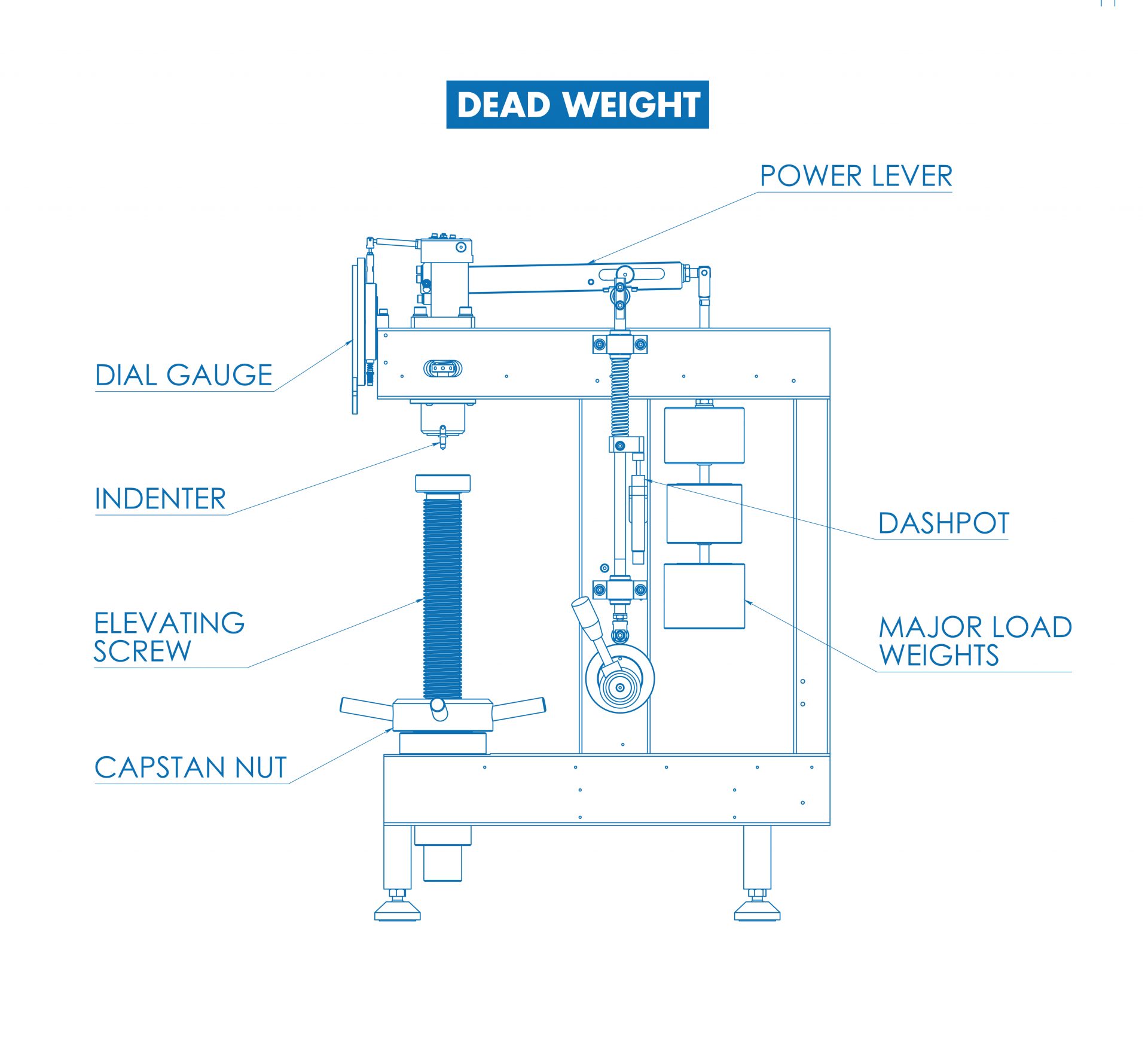

Since the early 1900s, when hardness testing of metals came as a measure to assure quality (a certain hardness of steel), hardness testing instruments have used dead weights to apply the required test forces. The reason for this was fairly simple, because dead weights are relatively inexpensive and easy to manufacture to the degree of accuracy required by commonly used test methods.
A dead weight hardness tester is a type of hardness testing machine that measures the hardness of a material by applying a load (a dead weight) onto an indenter that presses into the surface of the material, then determining hardness from the depth or size of the indentation.
It follows an open-loop system that does not have a feedback mechanism, which can affect the accuracy of hardness measurements.
The problem with dead weights is that the force must be applied to the test piece through a lever structure, with many moving parts, to reach a small indenter. Transferring the dead-weight force to the tip of a small diamond or ball indenter, for instance, 150 kgf main load used for a Rockwell HRC test, is difficult to accomplish. The large size and mass of a 150 kg weight would not fit in a handy instrument, so it required designers to use smaller weights with levers to intensify the force to the desired levels.
The problem just gets bigger if the force increases to 3000 kgf for Brinell measurements, but dead weight systems are also a challenge for designers for low-force hardness testers going down to 1 gf, for instance.
Levers require pivots, guides, bearings and other friction-producing parts that cause force application instability.
Although it is possible to control these sources of error, any friction point in the system will eventually have a negative effect that slowly increases during the lifetime of the instrument. It is also not easy to control a dead-weight application in a dead-weight system. Because the dead weight must be moved to apply the test force, stopping it quickly without overload and oscillation is problematic. Many older testers use dashpots (oil-filled dampers) to control the application; however, these dashpots had problems of their own (oil leaking, wear & tear on the sealings, temperature effects). In later designs, dashpots were replaced by motors.
While this eliminated some dashpot problems, the need to perform tests quickly makes motor speed critical, and as a result, force overshoot and oscillation are frequent problems. Motorized dead weight testers are also slow-working machines, which is not ideal for production environments. It is assumed that dead weight-originated forces remain consistent as each test is performed. But this remains an assumption; the reality shows a number of problems.
Because there is no control on the eventually applied force, the dead-weight tester is an open-loop, force application system.

Explore our products for closed-loop hardness testers with cutting-edge sensors, reliable feedback, precise optical measurements, and the latest AI and automation features. With over 100 years of expertise in hardness testing, INNOVATEST is trusted by scientists, engineers, and industries around the world.